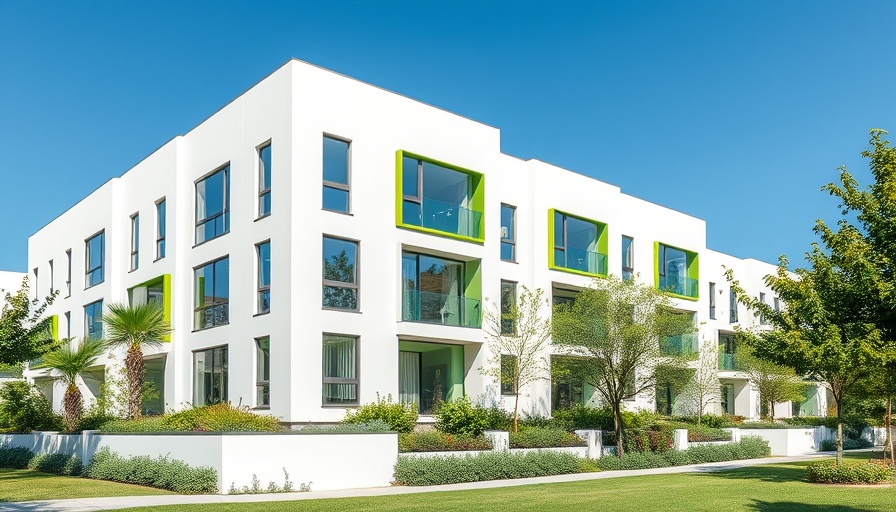
Rethinking Density: The Los Angeles Housing Dilemma
In a city known for its sprawling suburbs and iconic sun-kissed aesthetics, the conversation around housing density and affordability has taken a critical turn. The recent call to "Los Angelize" rather than "Manhattanize" L.A. reflects an urgent need for innovative housing solutions that complement its unique urban landscape. As housing affordability in Los Angeles continues to challenge residents, exploring historical architectural contexts may hold the key to sustainable solutions.
Historical Context: The Evolution of Housing in L.A.
Los Angeles has a rich architectural history characterized by medium-density designs that have served to accommodate an ever-growing population. From the humble bungalow courts to the inventive dingbat apartments, these structures embody the spirit of upward mobility and adaptability in Southern California. The push for new designs echoes sentiments from the early 1900s, when R1 zoning first shaped neighborhoods, allowing them to evolve over decades.
The Challenge of the ADU: Are Granny Flats Enough?
Since the introduction of accessory dwelling units (ADUs) in California, homeowners have embraced the idea of adding granny flats or casitas. Indeed, these units now constitute a significant proportion of new housing permits. However, they represent a piecemeal approach to a complex problem. Critics argue that while ADUs can contribute positively to the housing market, they alone cannot address the depth of the ongoing affordability crisis. Without a comprehensive strategy to increase housing production across various types, the challenges will persist.
Small Lots, Big Impacts: Innovative Solutions
The recent wins from the "Small Lots, Big Impacts" competition suggest that creative solutions are emerging. Designs that incorporate shared spaces, modular structures, and community gardens present opportunities to enhance both quality of life and housing density. These innovative concepts advocate for a living environment that not only feeds the pocketbook but also fosters community interaction and resilience in the wake of climate events like the Eaton and Palisades fires.
Community-Centric Design: Strengthening Neighborhood Ties
Modern housing solutions must also embrace the concept of community-centric design. The COVID-19 pandemic highlighted the need for flexible living arrangements where families could manage remote work and quarantine measures. The emphasis on creating adaptable living spaces can promote stronger community ties, ultimately addressing the loneliness and isolation often associated with urban living.
Looking Ahead: Future Trends in L.A. Housing
As Los Angeles seeks to address its housing crisis, a shift towards more inclusive and community-oriented development is essential. Future predictions suggest that cities may increasingly embrace mixed-use developments that integrate residence, work, and recreation spaces. This trend may not just solve housing shortages but also help forge vibrant communities, redefining what it means to live in Los Angeles.
Conclusion: The Path to Los Angelizing L.A.
Engaging in the debate over housing in Los Angeles is not just about constructing buildings but creating a shared future. By revisiting and revitalizing the principles that shaped neighborhoods in the past while integrating modern designs, we can construct a path towards a more inclusive and sustainable Los Angeles. Embracing innovation and community connections are pivotal steps towards making that vision a reality, ensuring our beloved city is not merely a backdrop but a flourishing part of our lives.
Take Action: Join the movement towards smarter housing solutions in Los Angeles by advocating for community-centric developments and supporting local initiatives aimed at improving housing affordability.
 Add Row
Add Row  Add
Add 




 Add Row
Add Row  Add
Add 

Write A Comment